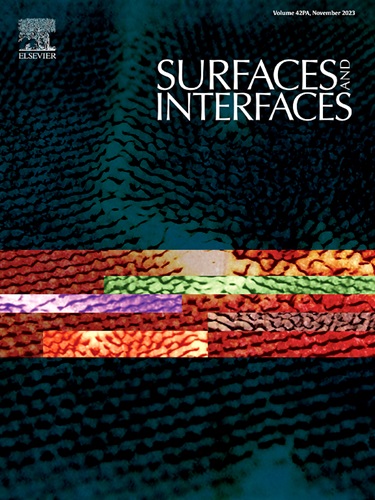Interface engineering of BiFeO3 ferro-resistive memories for sustainable high diode current
IF 5.7
2区 材料科学
Q2 CHEMISTRY, PHYSICAL
引用次数: 0
Abstract
Resistive switching, arising from the polarization modulation of the interfacial Schottky barrier in ferroelectric devices, holds promise for information storage applications. However, the performance reliability of such memory devices faces challenges, especially when the diode current is maximized for rapid data processing. Here, we demonstrate a substantial enhancement in the stability of diode current by meticulously selecting electrodes to establish a defect-free interface. This deliberate design effectively mitigates interfacial charge injection to screen the polarization of the ferroelectric BiFeO3 thin film, thereby significantly enhancing the performance of the prototype memory devices. The BiFeO3 devices featuring the epitaxial SrRuO3 electrodes exhibit excellent stability in terms of coercive voltage and current rectification ratio during alternating pulse cycling while maintaining a high diode current density of 0.83 A/cm2 at a bias voltage of -2.2 V. Conversely, metal electrodes facilitates trap formation at the interface for charge injection, which potentially screens the domain switching field and leads to an increased coercive voltage in BiFeO3 devices. Additionally, injected charges can defuse into the interior of the ferroelectric thin film, precipitating polarization degradation and even device breakdown. This work elucidates the critical role of a defect-free interface in achieving sustainable high diode current for ferro-resistive memory.

求助全文
约1分钟内获得全文
求助全文
来源期刊

Surfaces and Interfaces
Chemistry-General Chemistry
CiteScore
8.50
自引率
6.50%
发文量
753
审稿时长
35 days
期刊介绍:
The aim of the journal is to provide a respectful outlet for ''sound science'' papers in all research areas on surfaces and interfaces. We define sound science papers as papers that describe new and well-executed research, but that do not necessarily provide brand new insights or are merely a description of research results.
Surfaces and Interfaces publishes research papers in all fields of surface science which may not always find the right home on first submission to our Elsevier sister journals (Applied Surface, Surface and Coatings Technology, Thin Solid Films)
 求助内容:
求助内容: 应助结果提醒方式:
应助结果提醒方式:


